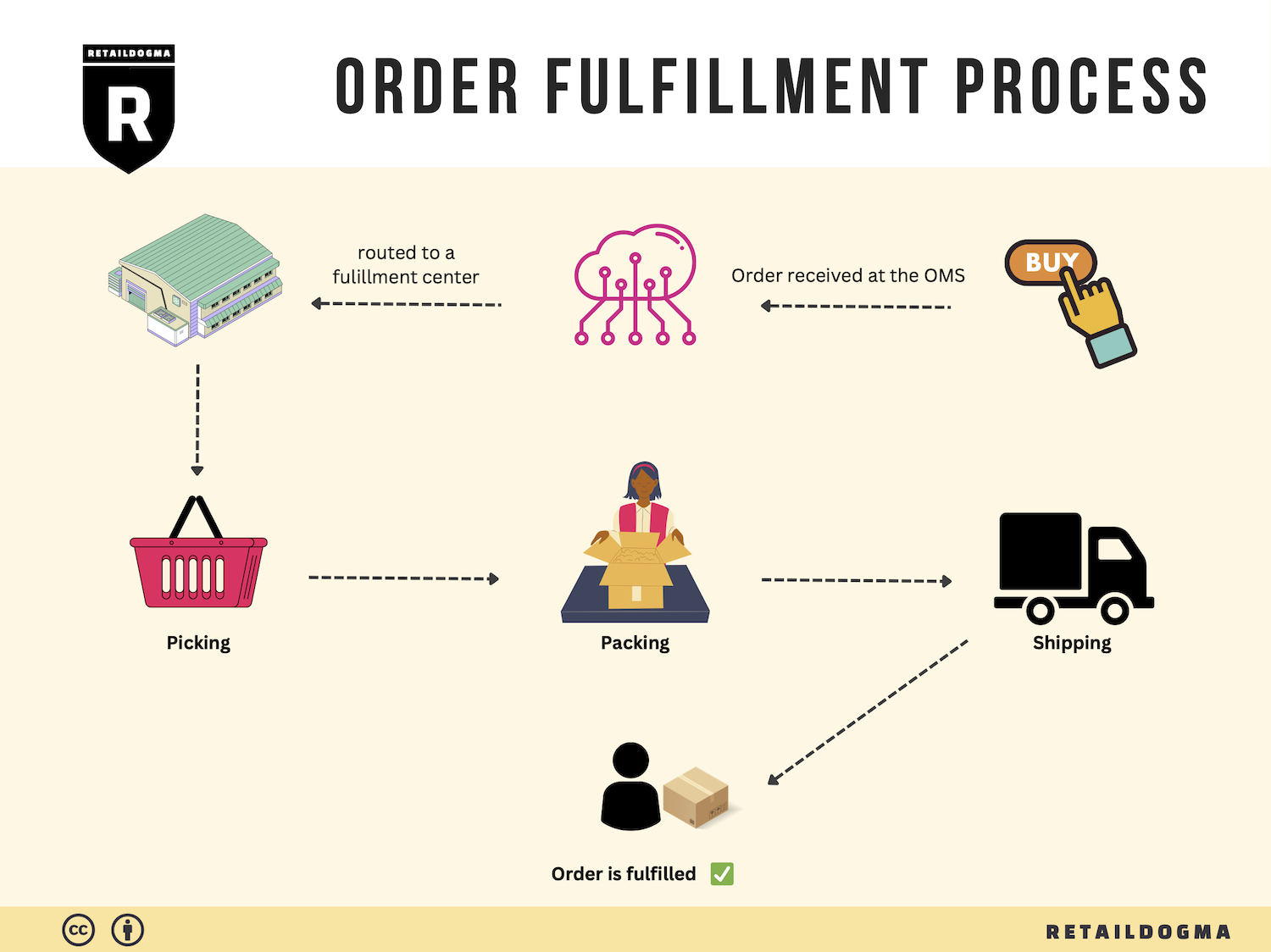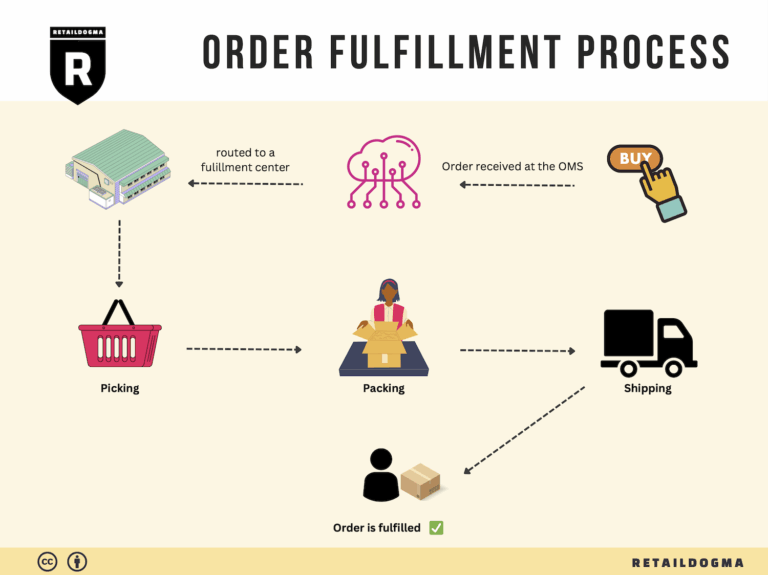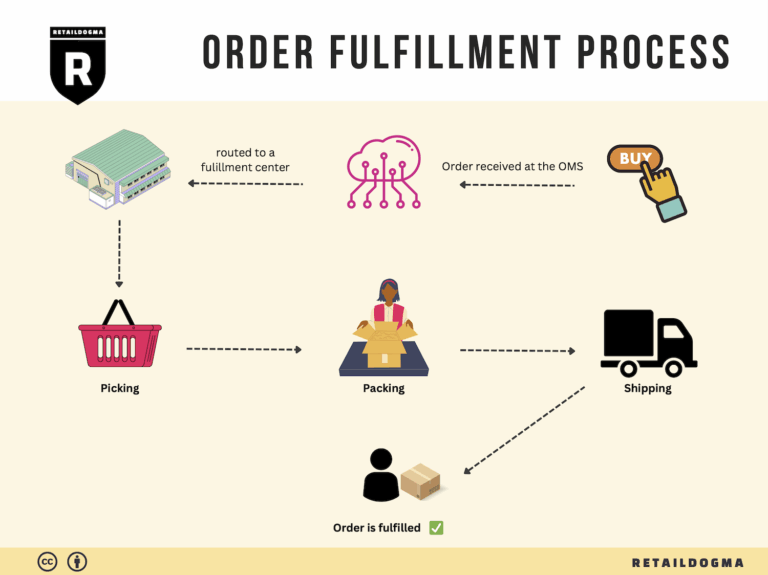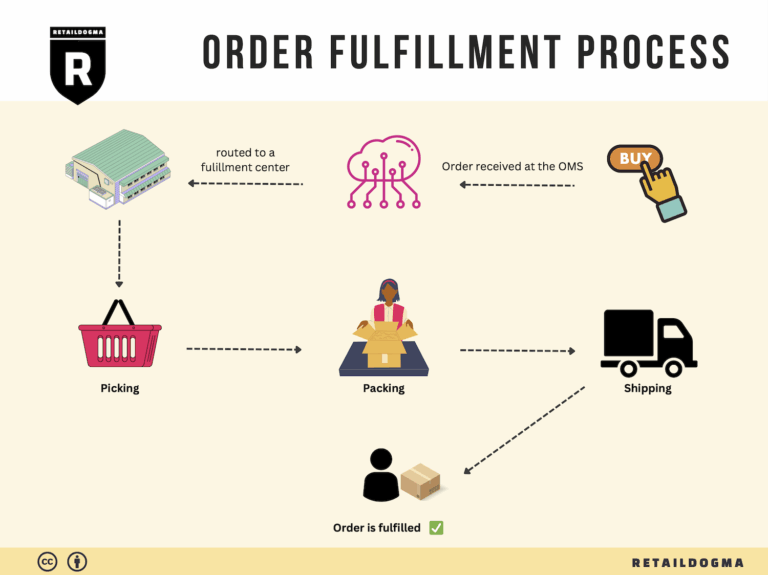How Order Fulfillment Works: A Step-by-Step Guide for Businesses
What is E-commerce Fulfillment? An Introduction for Growing Businesses
Understanding E-commerce Fulfillment: A Necessity for Growth
As your online business begins to flourish, the excitement of increased sales can quickly turn into the anxiety of managing logistics. One of the most common pain points for growing e-commerce brands is getting overwhelmed with the packing and shipping of orders. The process of fulfilling orders—essentially getting a product from your warehouse to your customer’s doorstep—can become a daunting task if not managed efficiently.
Fulfillment encompasses a series of interconnected steps, including receiving inventory, processing orders, picking items from shelves, packing them securely, and finally shipping them out. It’s not just about the physical act of packing and shipping; it’s about creating a seamless experience that keeps your customers satisfied and your operations running smoothly.
In this guide, we’ll delve into the world of e-commerce fulfillment, providing clarity and actionable insights for businesses looking to scale. We’ll explore various fulfillment models, including Third-Party Logistics (3PL) and Fulfillment by Amazon (FBA), to help you understand which option best suits your business needs. Each model has its unique advantages and challenges, and knowing these will empower you to make informed decisions.
Next, we will break down the core services that fulfillment partners typically offer. From inventory management to order tracking and customer service, these services can significantly impact your efficiency and customer satisfaction. Understanding what to look for in a fulfillment partner is crucial; we’ll provide you with key considerations to help you select the right fit for your operation.
Pricing is another critical aspect that can influence your choice of fulfillment partner. We will discuss various pricing structures, including per-order and per-item fees, so you can budget effectively and avoid unexpected costs.
Ultimately, the goal of this guide is to empower you—whether you’re an e-commerce business owner, an operations manager, or an entrepreneur—to make smart, strategic decisions about your logistics. By the end, you will have a clearer understanding of how to streamline your fulfillment process, allowing you to focus on what you do best: growing your business.
What You’ll Learn In This Guide
- What is E-commerce Fulfillment? An Introduction for Growing Businesses
- The Order Fulfillment Process: From ‘Buy’ Button to Customer’s Door
- Comparing Fulfillment Models: In-House vs. 3PL vs. Dropshipping
- A Deep Dive into Amazon FBA: Pros, Cons, and Who It’s For
- Core Services Offered by Fulfillment Centers
- How to Choose a Fulfillment Partner: A 6-Point Checklist
- Understanding Fulfillment Pricing: A Breakdown of Common Fees
- Frequently Asked Questions (FAQs) about Fulfillment
- Conclusion: Is Outsourcing Fulfillment the Right Move for Your Business?
- Important Disclaimer
The Order Fulfillment Process: From ‘Buy’ Button to Customer’s Door
1. Receiving Inventory
The order fulfillment process begins with receiving inventory, a critical step where products are accepted into the warehouse. This stage involves checking shipments against purchase orders to ensure that the correct items and quantities have been delivered. A key term associated with this step is SKU (Stock Keeping Unit), which is a unique identifier assigned to each product for easy tracking.
This step is important because accurate inventory receiving sets the foundation for the entire fulfillment process. Any discrepancies, such as missing or damaged items, can lead to delays and customer dissatisfaction later on. Properly managing the receiving process also allows businesses to maintain accurate stock levels, which is essential for effective order processing and inventory management.
2. Warehouse Storage
Once inventory has been received, the next step is warehouse storage. Products are organized and stored in designated areas of the warehouse, utilizing various storage solutions such as shelving, pallets, or bins. Efficient warehouse layout is crucial here, as it directly impacts the ease of picking and packing orders. Inventory management systems (IMS) play a vital role in this stage by tracking the location and quantity of each SKU.
The importance of effective warehouse storage cannot be overstated. A well-organized warehouse minimizes the time spent searching for products, which enhances operational efficiency and reduces labor costs. Additionally, proper storage practices help prevent damage to products, ensuring they remain in sellable condition until an order is placed.
3. Order Picking
With inventory securely stored, the next step is order picking, where warehouse staff retrieve items based on incoming customer orders. This process typically begins when a customer clicks the ‘buy’ button on an e-commerce site, triggering the fulfillment center to generate a pick list. The pick list details all the items required for an order, along with their locations within the warehouse.
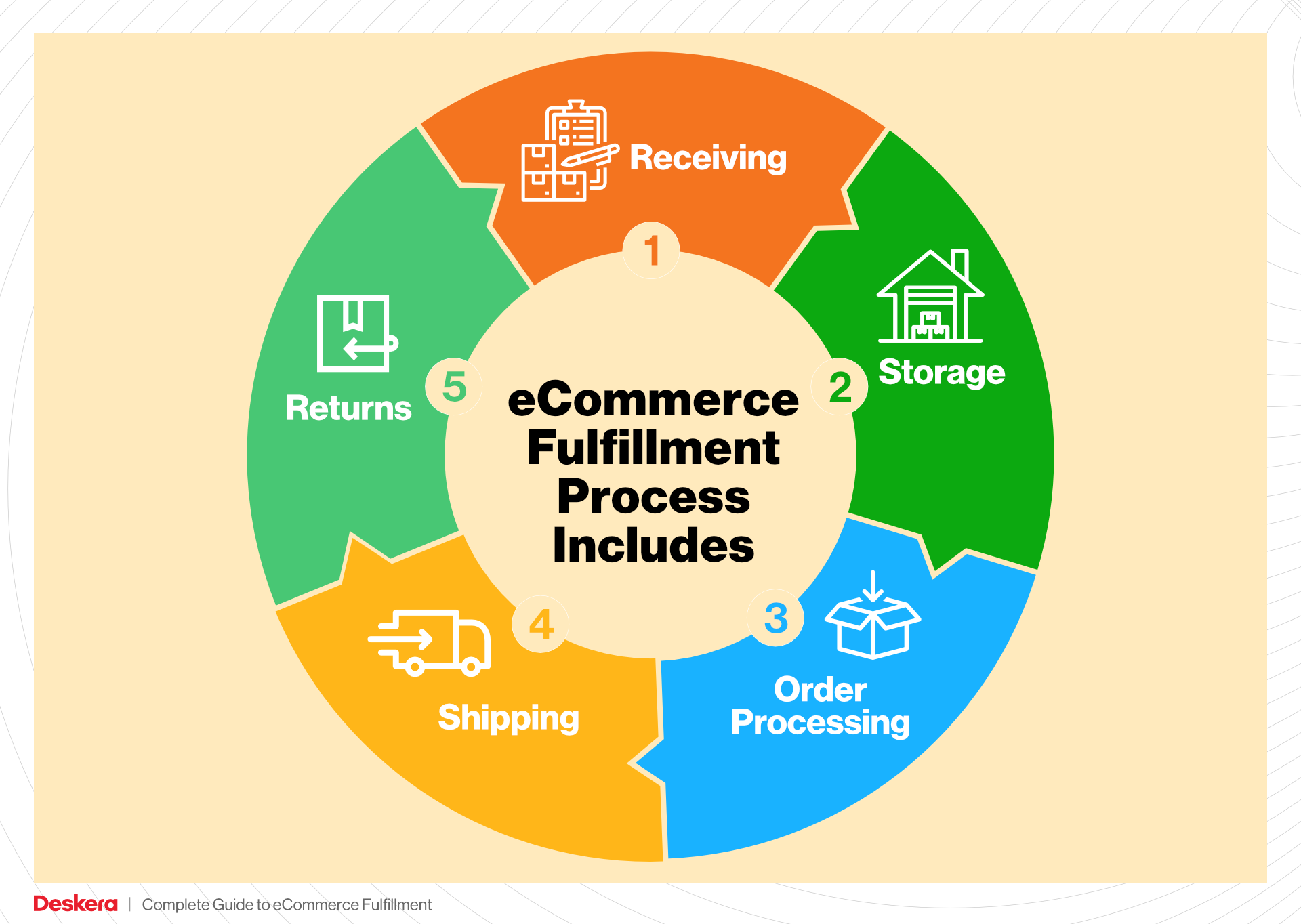
Order picking is crucial as it directly affects order accuracy and fulfillment speed. There are several methods for picking orders, including piece picking, batch picking, zone picking, and wave picking. The chosen method can significantly influence labor efficiency and the time taken to process orders. A streamlined picking process reduces the chances of errors, ensuring that customers receive the correct items promptly, which is vital for maintaining high levels of customer satisfaction.
4. Order Packing
After items are picked, they move to the order packing stage. This involves placing the retrieved products into appropriate boxes, along with necessary packing materials such as bubble wrap or packing peanuts, to ensure safe transit. During packing, operators must also select the right packaging based on the items’ fragility and size, which can be guided by packing guidelines established by the business.
Packing is important for several reasons. First, it ensures that products are protected during shipping, minimizing the risk of damage. Second, efficient packing processes can help reduce shipping costs by optimizing box size and weight. Finally, packing also presents an opportunity for branding; businesses can include branded materials to enhance the customer experience during unboxing, which is increasingly recognized as an important touchpoint in the customer journey.
5. Shipping & Delivery
The final step in the order fulfillment process is shipping and delivery. Once an order is packed, it is labeled and prepared for shipment via the selected carrier. Key considerations during this stage include the choice of shipping method, which can impact delivery speed and cost, and ensuring compliance with carrier requirements for labeling and documentation.
Shipping and delivery are critical to customer satisfaction, as they determine how quickly and reliably customers receive their orders. Delays or inaccuracies at this stage can lead to negative customer experiences and affect brand reputation. Leveraging shipping software can streamline the process by automating label generation, tracking shipments, and managing communication with carriers. This not only enhances operational efficiency but also provides customers with real-time updates, fostering transparency and trust.
In conclusion, understanding and optimizing each step of the order fulfillment process is essential for e-commerce businesses looking to scale effectively. By focusing on accuracy, efficiency, and customer experience throughout these stages, businesses can build a robust fulfillment strategy that supports growth and enhances customer loyalty.
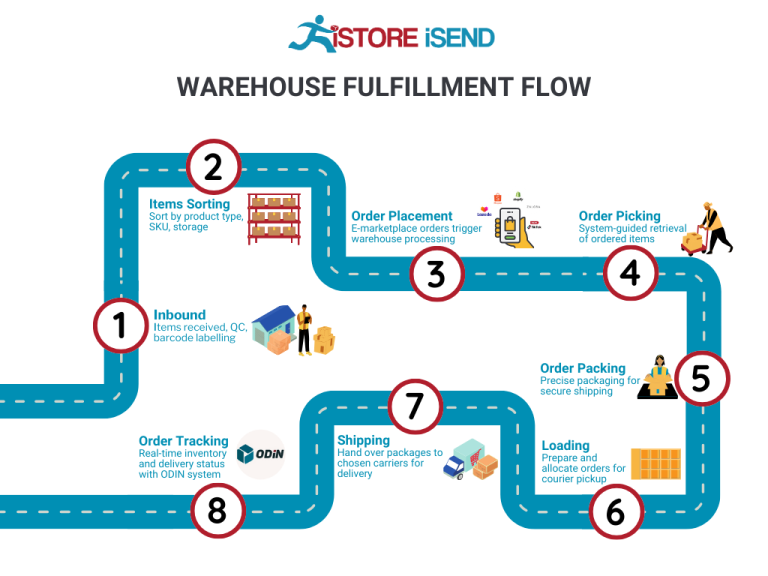
Comparing Fulfillment Models: In-House vs. 3PL vs. Dropshipping
Fulfillment Model Comparison
| Model | Who Handles Inventory | Best For (Business Stage) | Key Advantage | Key Disadvantage |
|---|---|---|---|---|
| In-House Fulfillment | Business (Owner/Staff) | Startups to Established Businesses | Complete control over operations | High overhead costs and resource-intensive |
| Third-Party Logistics (3PL) | 3PL Provider | Growing Businesses | Scalability and reduced operational burden | Less control over fulfillment processes |
| Dropshipping | Supplier | New Entrepreneurs | Low startup costs and no inventory risk | Lower profit margins and dependency on suppliers |
In-House Fulfillment
In-house fulfillment refers to the process where a business manages its own warehousing, inventory management, order processing, and shipping operations. This model allows companies to retain full control over their logistics, ensuring that every aspect of the fulfillment process aligns with their brand standards and customer service expectations. For startups and established businesses that have the capital and resources, in-house fulfillment can lead to higher quality control and customization options, such as personalized packaging and branding. However, this model comes with significant disadvantages, including high overhead costs associated with maintaining a warehouse, hiring staff, and managing inventory. Additionally, it can be resource-intensive, requiring substantial time and effort to optimize processes and workflows effectively. For businesses experiencing rapid growth, the in-house model may become increasingly challenging as order volumes rise, necessitating a reevaluation of fulfillment strategies.
Third-Party Logistics (3PL)
Utilizing a third-party logistics provider (3PL) involves outsourcing fulfillment operations to an external company specializing in storage, packing, and shipping. This model is particularly advantageous for growing businesses that need to scale operations without the burden of managing logistics in-house. A 3PL can offer various services, including warehousing, inventory management, pick and pack services, and shipping, often leveraging advanced technology for real-time tracking and order management. The key advantage of this model is scalability; as order volumes fluctuate, businesses can easily adjust their fulfillment needs without the complexities of managing physical assets or workforce. However, the main disadvantage is the potential loss of control over fulfillment processes, which can impact customer experience if the 3PL fails to meet expectations. Businesses must carefully vet potential 3PL partners to ensure alignment in service levels, brand representation, and operational efficiency.
Dropshipping
Dropshipping is a fulfillment model where the retailer does not maintain inventory but instead partners with suppliers who handle inventory storage, order fulfillment, and shipping directly to customers. This approach is particularly appealing for new entrepreneurs and small businesses looking to minimize upfront costs and risks associated with inventory management. The key advantage of dropshipping is the low barrier to entry; businesses can launch an e-commerce store without the need to invest in inventory upfront. However, this model comes with challenges, including lower profit margins due to supplier fees and the potential for stock shortages or shipping delays that are out of the retailer’s control. Additionally, reliance on third-party suppliers can lead to inconsistencies in product quality and fulfillment speed, which can ultimately affect customer satisfaction. Entrepreneurs must carefully select reliable suppliers and maintain open communication to mitigate these risks while leveraging the flexibility that dropshipping provides.
Conclusion
When selecting a fulfillment model, e-commerce businesses must consider their current stage of growth, operational capabilities, and long-term goals. In-house fulfillment offers control and customization but requires significant resources, while 3PLs provide scalability and efficiency with less direct oversight. Dropshipping presents an accessible entry point for newcomers but comes with its own set of challenges. By evaluating the strengths and weaknesses of each model, businesses can make informed decisions that align with their operational strategies and customer expectations.
A Deep Dive into Amazon FBA: Pros, Cons, and Who It’s For
Understanding Fulfillment by Amazon (FBA)
Fulfillment by Amazon (FBA) is a service offered by Amazon that allows e-commerce sellers to store their products in Amazon’s fulfillment centers. In turn, Amazon takes care of storage, packaging, and shipping of products directly to customers. This service enables sellers to leverage Amazon’s extensive logistics network, customer service, and marketplace reach.
How FBA Works
-
Product Listing: Sellers create a product listing on Amazon and select FBA as their fulfillment method. They can either send their inventory to Amazon or have it stored in their own warehouse.
-
Inventory Shipment: Sellers ship their products to Amazon’s designated fulfillment centers. Amazon provides guidelines on how to package and label products to ensure they are received correctly.
-
Storage: Once the products arrive at the fulfillment center, they are stored until an order is placed. Amazon uses sophisticated inventory management systems to track products.
-
Order Processing: When a customer places an order, Amazon picks the product from the shelf, packs it, and ships it directly to the customer. This process is often completed within hours, thanks to Amazon’s optimized logistics.
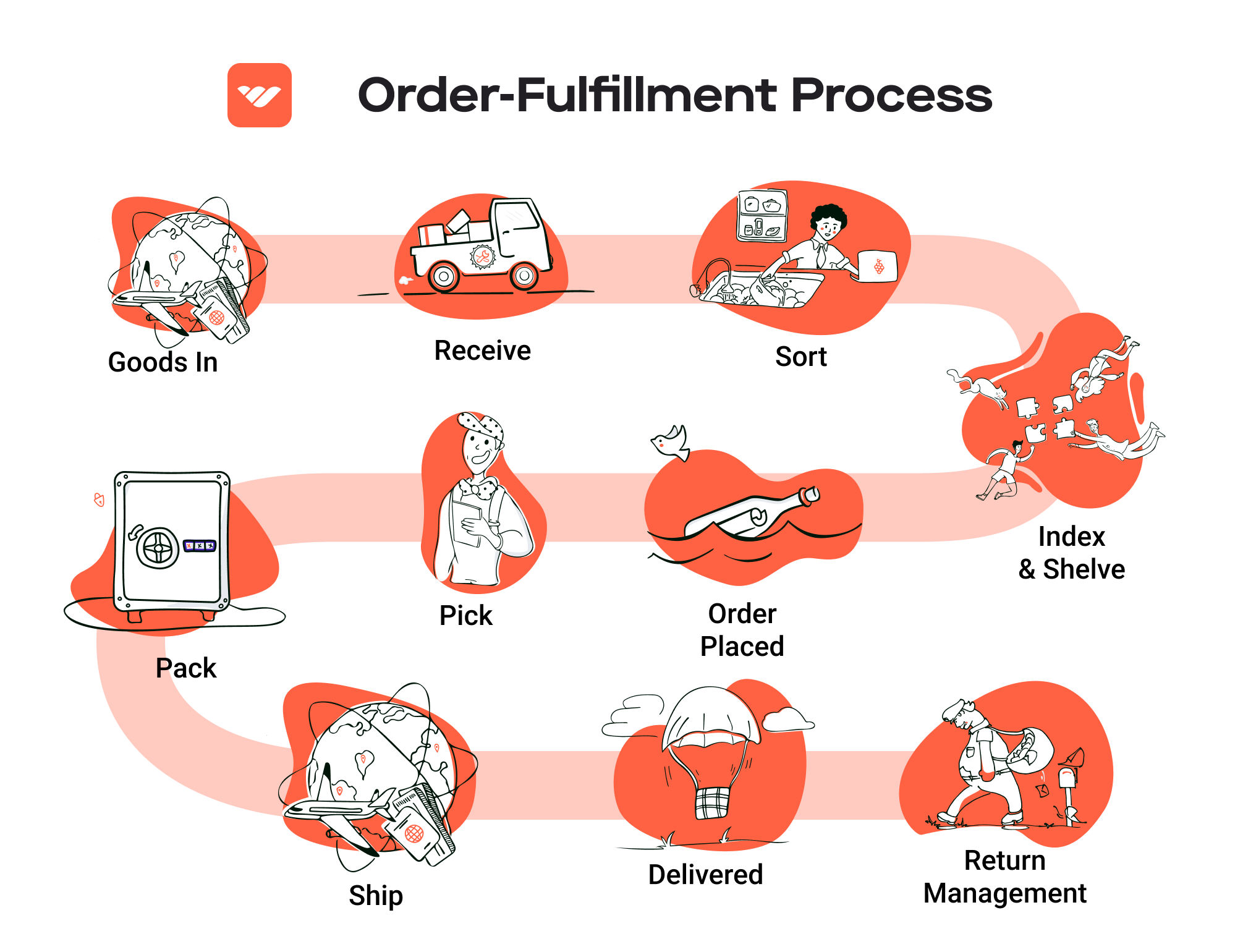
-
Customer Service: Amazon handles all customer service inquiries and returns related to the FBA orders, providing sellers with more time to focus on other aspects of their business.
-
Payment: After the sale, Amazon deducts its fees and disburses the remaining amount to the seller, usually on a bi-weekly basis.
Pros of Using FBA
1. Prime Eligibility
One of the most significant advantages of using FBA is that products become eligible for Amazon Prime. This can lead to increased sales as Prime members are more likely to purchase items with the Prime badge due to the promise of fast, free shipping.
2. Customer Trust
Amazon is a trusted platform with millions of customers. By using FBA, sellers can leverage Amazon’s reputation, which can enhance their brand credibility. Customers are more likely to buy from sellers who utilize FBA due to the assurance of Amazon’s customer service and return policies.
3. Multi-Channel Fulfillment
FBA isn’t limited to just Amazon sales. Sellers can use FBA for orders from their own websites or other sales channels. This multi-channel fulfillment capability allows sellers to streamline their logistics and manage inventory from a single platform.
4. Scalability
FBA allows sellers to scale their business without the need to invest heavily in warehousing and logistics. As sales grow, sellers can simply send more inventory to Amazon, and the fulfillment process remains consistent.
5. Simplified Logistics
Outsourcing storage, packing, and shipping to Amazon simplifies the logistics burden on sellers. This can be particularly beneficial for small business owners who may not have the resources to manage these operations effectively.
Cons of Using FBA
1. High Fees
While FBA can save time, it can also be expensive. Sellers are charged for storage space, fulfillment fees per unit, and additional costs for returns or long-term storage. These fees can significantly cut into profit margins, particularly for low-priced items.
2. Strict Inventory Rules
Amazon has stringent guidelines regarding inventory management. Sellers must adhere to strict labeling, packaging, and storage requirements. Non-compliance can lead to additional fees or even suspension of selling privileges.
3. Commingling Risks
FBA operates on a commingling model, meaning that your inventory may be mixed with products from other sellers. This can lead to issues if a customer returns a defective product, as it may be difficult to trace it back to the original seller, potentially damaging your reputation.
4. Limited Control
When using FBA, sellers lose some control over the fulfillment process. Amazon dictates shipping times, packaging, and customer interaction, which may not align with a seller’s brand identity or customer service philosophy.
5. Inventory Management Challenges
Managing inventory levels can be complex with FBA. Sellers must forecast demand accurately to avoid stockouts or overstock situations, both of which can lead to financial strain.
Who is FBA Best For?
Fulfillment by Amazon is particularly well-suited for:
-
Small to Medium-Sized Businesses: Businesses that lack the resources for extensive logistics operations can benefit greatly from FBA’s infrastructure.
-
Sellers with High Sales Volume: Those with a consistent and high sales volume can offset the costs associated with FBA and benefit from the speed and efficiency of the service.
-
Brands Seeking Rapid Growth: Companies looking to scale quickly can leverage Amazon’s vast customer base and trusted logistics network to increase sales without the logistical burden.
-
Multi-Channel Sellers: E-commerce businesses that sell on multiple platforms can streamline their operations by using FBA to fulfill orders from various channels.
In conclusion, Fulfillment by Amazon offers a compelling solution for many e-commerce businesses, particularly those aiming to maximize their reach and efficiency in logistics. However, it’s essential for sellers to weigh the pros and cons carefully and assess whether the fees and limitations align with their business goals and operational capabilities.
Core Services Offered by Fulfillment Centers
Inventory Management & Warehousing
Inventory management and warehousing form the backbone of effective fulfillment operations. This service involves the systematic tracking of stock levels, orders, sales, and deliveries, ensuring that businesses maintain optimal inventory without overstocking or stockouts. Fulfillment centers utilize advanced warehouse management systems (WMS) that provide real-time data on inventory status, allowing for precise forecasting and demand planning.
Benefits:
1. Optimized Stock Levels: By accurately monitoring inventory, businesses can minimize carrying costs and reduce waste associated with unsold products.
2. Improved Order Accuracy: With a clear view of inventory, fulfillment centers can ensure that the right products are available for order processing, reducing errors and enhancing customer satisfaction.
3. Scalability: As e-commerce businesses grow, fulfillment centers can quickly adapt to changing inventory needs, accommodating seasonal spikes or new product launches without requiring significant investment in infrastructure.
Pick and Pack Services
Pick and pack services are critical to the order fulfillment process, transforming inventory into shipped packages. This service involves selecting items from inventory (picking) based on customer orders and then packing them appropriately for shipment. Fulfillment centers employ various picking methods, such as piece picking, batch picking, and zone picking, to optimize efficiency. Once items are picked, they are packed into boxes with appropriate packing materials to ensure safe delivery.
Benefits:
1. Efficiency and Speed: Streamlined pick and pack processes help reduce order processing times, allowing businesses to fulfill orders quickly and meet customer expectations for fast delivery.
2. Cost Management: By utilizing efficient packing methods and minimizing the size of packages, fulfillment centers can help reduce shipping costs, which is particularly important for e-commerce businesses competing on price.
3. Customization Options: Many fulfillment centers offer branded packaging services, allowing businesses to maintain their brand identity even in the logistics process, enhancing the customer experience during unboxing.
Kitting and Assembly
Kitting and assembly services involve the grouping of individual items into ready-to-ship sets or kits. This can include anything from bundling complementary products together to assembling products that require multiple components. Fulfillment centers can handle complex kitting tasks, ensuring that products are packaged correctly before shipment.
Benefits:
1. Value Addition: Kitting allows businesses to create bundled offers, which can increase the perceived value for customers and encourage larger purchases.
2. Efficiency in Order Fulfillment: By preparing kits in advance, businesses can streamline the order fulfillment process. This is particularly beneficial during peak shopping seasons or for subscription box services.
3. Inventory Management: Kitting helps in managing inventory more effectively by reducing the number of individual SKUs that need to be tracked. This simplification can lead to lower operational costs and enhanced inventory turnover.
Returns Management (Reverse Logistics)
Returns management, or reverse logistics, is an essential service provided by fulfillment centers that addresses the handling of returned products. This process includes receiving returned items, inspecting them, restocking them if they are in sellable condition, or processing them for refurbishment or disposal. Efficient returns management is crucial in maintaining customer satisfaction and loyalty, especially in the e-commerce space.
Benefits:
1. Customer Retention: A smooth and hassle-free returns process enhances the customer experience, making it more likely that customers will return to shop again. This is particularly important as consumers increasingly expect easy return options.
2. Cost Efficiency: Fulfillment centers can help businesses minimize losses associated with returns by efficiently managing the restocking process and identifying patterns in returns that can inform product quality and customer service improvements.
3. Data Insights: By analyzing return data, businesses can gain valuable insights into customer preferences and product issues, allowing them to make informed decisions about inventory and product offerings.
Conclusion
The core services offered by fulfillment centers play a vital role in the success of e-commerce businesses. By leveraging these services—inventory management and warehousing, pick and pack services, kitting and assembly, and returns management—businesses can streamline their operations, reduce costs, enhance customer satisfaction, and ultimately scale their operations effectively. Understanding and utilizing these services strategically can provide a significant competitive advantage in the ever-evolving e-commerce landscape.
How to Choose a Fulfillment Partner: A 6-Point Checklist
Location & Warehouse Network
Importance: The geographical location of your fulfillment partner’s warehouses significantly impacts shipping times and costs. A strategically located partner can help you reach your customers faster and more efficiently.
Questions to Ask:
– Where are your warehouses located? How does this align with my target customer base?
– Do you have multiple warehouses that allow for distributed inventory?
– What is your average shipping time to my key markets?
– How do you handle orders that require international shipping?
Technology & Integrations
Importance: An efficient fulfillment process relies heavily on technology. A partner that offers robust warehouse management systems (WMS) and integrates seamlessly with your e-commerce platform can streamline operations, reduce errors, and provide real-time inventory tracking.
Questions to Ask:
– What WMS do you use, and what features does it offer?
– Can your system integrate with my e-commerce platform (e.g., Shopify, WooCommerce, Magento)?
– Do you provide real-time inventory updates and order tracking?
– How do you handle data security and compliance with industry standards?
Specializations (e.g., Cold Storage, Oversized Items)
Importance: Depending on your product type, you may require specialized services. Whether you sell perishables needing cold storage or oversized items that require unique handling, selecting a partner with the right capabilities is crucial.
Questions to Ask:
– What types of special handling do you offer (e.g., temperature-controlled storage, hazardous materials)?
– How do you manage inventory for specialized products?
– Are you equipped to handle returns and exchanges for specialized items?
– Can you accommodate unique packaging or shipping requirements?
Scalability & Capacity
Importance: As your business grows, your fulfillment needs will evolve. A partner that can scale with you will save time and resources, ensuring you don’t have to switch providers as your order volume increases.
Questions to Ask:
– What is your current capacity, and how has it changed over the past few years?
– How quickly can you scale operations to meet increased demand?
– Do you have systems in place for peak seasons or unexpected surges in orders?
– What is your approach to managing inventory during periods of high demand?
Pricing and Contracts
Importance: Understanding the pricing structure and contract terms is essential for maintaining profitability. Transparent pricing helps you avoid unexpected costs and ensures you can budget effectively.
Questions to Ask:
– Can you provide a detailed breakdown of your pricing model (e.g., pick and pack fees, storage fees)?
– Are there any additional costs I should be aware of (e.g., for returns, special handling)?
– What are the contract terms, and is there flexibility if my needs change?
– How often do you review and adjust pricing?
Customer Support & Reviews
Importance: Reliable customer support can make a significant difference in your fulfillment operations. An attentive partner can quickly resolve issues, ensuring that your customers receive their orders on time.
Questions to Ask:
– What support channels do you offer (e.g., phone, email, chat)?
– What are your typical response times for customer inquiries?
– Can you provide references or case studies from current clients?
– How do you handle mistakes or issues with orders, and what is your process for resolving them?
Conclusion
Choosing the right fulfillment partner is a critical decision for your e-commerce business. By carefully evaluating potential partners against this checklist, you can ensure that you select a provider that aligns with your operational needs, enhances customer satisfaction, and supports your growth strategy. Taking the time to ask the right questions and understand their capabilities will set the foundation for a successful partnership in your fulfillment journey.
Understanding Fulfillment Pricing: A Breakdown of Common Fees
Initial Setup Fees
Initial setup fees are charges that e-commerce businesses may incur when they first begin using a fulfillment service. This fee typically covers the costs associated with onboarding, which can include account setup, integration with your e-commerce platform, and initial training for your team on how to use the fulfillment provider’s systems.
The calculation of initial setup fees can vary significantly based on the complexity of your requirements. For instance, if you need custom packaging solutions or specific technology integrations, these costs may be higher. On average, businesses might expect to pay anywhere from a few hundred to several thousand dollars, depending on the fulfillment provider and the level of customization required.
Receiving Fees
Receiving fees are charged when your inventory arrives at the fulfillment center. This fee covers the labor and resources necessary to unload, inspect, and store your products. It also includes the time spent entering the products into the warehouse management system (WMS), which is crucial for tracking inventory levels accurately.
Receiving fees are generally calculated on a per-pallet or per-unit basis. For example, a fulfillment center might charge $25 per pallet received or $0.50 per individual item, depending on the size and nature of your products. It’s essential to clarify what services are included in this fee, as some providers may charge additional fees for inspections or special handling.
Storage Fees (per pallet/bin)
Storage fees are recurring charges for the space your inventory occupies within the fulfillment center. These fees can be assessed on a monthly basis and are typically calculated on a per-pallet or per-bin basis.
The cost of storage can vary significantly based on the location of the warehouse, the type of items stored, and the overall demand for space in that facility. For instance, you might encounter storage fees ranging from $10 to $30 per pallet per month. Some providers offer tiered pricing, where the cost per pallet decreases as you store more pallets, providing an incentive for higher inventory levels.
Pick & Pack Fees (per item/order)
Pick and pack fees are one of the most crucial components of fulfillment pricing, as they cover the labor involved in retrieving items from storage and preparing them for shipment. This fee is generally charged on a per-item or per-order basis, reflecting the complexity and time required to fulfill each order.
The calculation of pick and pack fees can vary based on several factors, including the number of items in an order, the picking method used (e.g., piece picking, batch picking), and the specific packing requirements for your products. Typical fees might range from $1 to $5 per order, with additional costs for items requiring special handling, such as fragile or oversized products. Understanding these nuances can help you better estimate your fulfillment costs.
Shipping Fees
Shipping fees encompass the costs associated with sending your products to customers. These fees can include carrier charges, packaging materials, and any additional handling required to ensure that products are shipped safely and efficiently.
Shipping fees are usually calculated based on the weight and dimensions of the package, the shipping destination, and the chosen carrier service level (e.g., standard, expedited, overnight). Many fulfillment providers negotiate bulk shipping rates with major carriers, which can lead to significant savings for your business. On average, shipping fees can range from $5 to $20 per package, but this can vary widely based on the factors mentioned above.
Tips for Getting an Accurate Quote
When seeking quotes from fulfillment providers, clarity and detail are essential. Here are some tips to ensure you receive an accurate and comprehensive quote:
-
Provide Detailed Product Information: Include specifics about your inventory, such as dimensions, weight, and any special handling requirements.
-
Outline Your Fulfillment Needs: Clearly communicate your expected order volume, frequency, and any seasonal fluctuations to help providers assess your needs accurately.
-
Ask About All Fees: Ensure you inquire about all potential fees, including hidden costs that may not be immediately apparent, such as restocking or return handling fees.
-
Compare Multiple Providers: Don’t settle for the first quote you receive. Comparing multiple providers can give you a better understanding of market rates and help you identify the best value for your business.
-
Negotiate Terms: Many fulfillment providers are open to negotiation, especially if you can demonstrate a long-term partnership potential or higher order volumes.
By understanding these common fees and following these tips, you can make informed decisions that will support the growth and efficiency of your e-commerce operations.
Frequently Asked Questions (FAQs) about Fulfillment
1. What is pick and pack fulfillment?
Pick and pack fulfillment is the process of preparing and shipping individual customer orders. It involves two main stages: “picking,” where items are retrieved from warehouse shelves based on a packing list, and “packing,” where those items are securely placed into boxes for shipment. This process is crucial for ensuring timely and accurate delivery in e-commerce operations.
2. What is the difference between a warehouse and a fulfillment center?
A warehouse is primarily used for storing goods, while a fulfillment center is a specialized type of warehouse that focuses on processing and shipping customer orders. Fulfillment centers are equipped with systems and processes designed to handle the pick, pack, and ship operations efficiently, often integrating with e-commerce platforms for real-time order management.
3. What is a 3PL (Third-Party Logistics Provider)?
A 3PL is a company that provides outsourced logistics services, which can include transportation, warehousing, inventory management, and fulfillment. By partnering with a 3PL for pick and pack services, e-commerce businesses can streamline their operations, reduce overhead costs, and focus on core business activities while benefiting from the expertise of logistics professionals.
4. How much do fulfillment services cost?
Fulfillment service costs can vary widely based on several factors, including order volume, the complexity of picking and packing processes, and specific service requirements. Generally, costs may include pick and pack fees (charged per item or order), storage fees, shipping costs, and additional service charges for special handling or packaging. It’s advisable to request quotes from different providers to compare pricing structures.
5. What are common picking methods used in fulfillment?
Common picking methods include:
– Piece Picking: An employee picks items for one order at a time.
– Batch Picking: Multiple orders are picked simultaneously in one trip.
– Zone Picking: Workers are assigned specific areas and pick items for one order at a time.
– Wave Picking: Combines batch and zone picking, allowing workers to pick multiple orders within a designated zone.
6. How does the packing process work?
After items are picked, they are brought to a packing station where they are sorted and placed into appropriate boxes. Packing involves selecting the right box size, using suitable packing materials (like bubble wrap or foam), and ensuring that all items are secure to prevent damage during transit. The package is then labeled for shipment.
7. What role does technology play in pick and pack fulfillment?
Technology enhances pick and pack fulfillment through warehouse management systems (WMS), which help automate order processing, inventory tracking, and workflow optimization. Advanced solutions may include AI-driven packing recommendations and real-time dashboards for order management, leading to improved accuracy and efficiency.
8. How can I ensure accuracy in my pick and pack process?
To ensure accuracy, implement clear standard operating procedures (SOPs) for picking and packing, utilize barcode scanning or RFID technology to track inventory, and conduct regular training for staff. Additionally, consider adopting quality control measures, such as double-checking orders before shipment.
9. When should I consider outsourcing my pick and pack fulfillment?
Consider outsourcing your pick and pack fulfillment when you experience rapid growth that outpaces your current capacity, when order volume becomes too high to manage in-house efficiently, or when you want to reduce overhead costs and focus on your core business functions. Partnering with a 3PL can provide scalability and expertise without the need for significant capital investment.
10. What should I look for in a pick and pack fulfillment partner?
When selecting a pick and pack fulfillment partner, consider their experience in your industry, the technology they use for inventory and order management, their shipping capabilities, pricing structure, and customer service reputation. Ensure they can accommodate your specific needs, such as branded packaging or international shipping, and assess their ability to scale with your business growth.
Conclusion: Is Outsourcing Fulfillment the Right Move for Your Business?
Evaluating the Benefits of Outsourcing Fulfillment
As e-commerce businesses strive to scale their operations, the decision to outsource fulfillment often emerges as a strategic opportunity. Utilizing a pick and pack fulfillment service can yield significant benefits that directly impact your bottom line and operational efficiency.
One of the most compelling advantages is time savings. By outsourcing fulfillment, you can redirect your focus from the complexities of order processing and shipping to core business activities such as marketing and product development. This shift enables you to enhance customer engagement and drive sales growth without the distraction of logistics.
Scalability is another crucial factor. As your business expands, so do the challenges associated with managing inventory and order fulfillment. Third-party logistics (3PL) providers offer flexible solutions that can adapt to fluctuating demand, whether you’re experiencing peak seasons or entering new markets. This flexibility allows you to scale your operations seamlessly, ensuring that you can meet customer expectations without compromising service quality.
Additionally, partnering with a fulfillment service gives you access to specialized expertise and advanced technology. Established fulfillment centers utilize sophisticated warehouse management systems and employ best practices that can significantly reduce errors and improve order accuracy. This expertise not only enhances efficiency but also elevates the customer experience by ensuring timely and accurate deliveries.
However, it’s essential to choose the right fulfillment partner. Not all 3PLs are created equal; selecting one that aligns with your business goals and values is critical for sustained growth.
Next Steps
To determine if outsourcing fulfillment is the right move for your business, consider conducting an audit of your current shipping process. Evaluate the time, resources, and costs associated with your in-house fulfillment. This analysis will help you identify potential inefficiencies and assess whether a fulfillment partner could enhance your operational performance and support your growth objectives. Don’t hesitate to explore your options—taking this step could be pivotal in your journey toward scaling your e-commerce business successfully.
Important Disclaimer
⚠️ Important Disclaimer
The information in this guide is for educational purposes. Fulfillment services, pricing, and platform features change frequently. Always conduct your own due diligence and consult with providers directly before making business decisions.
